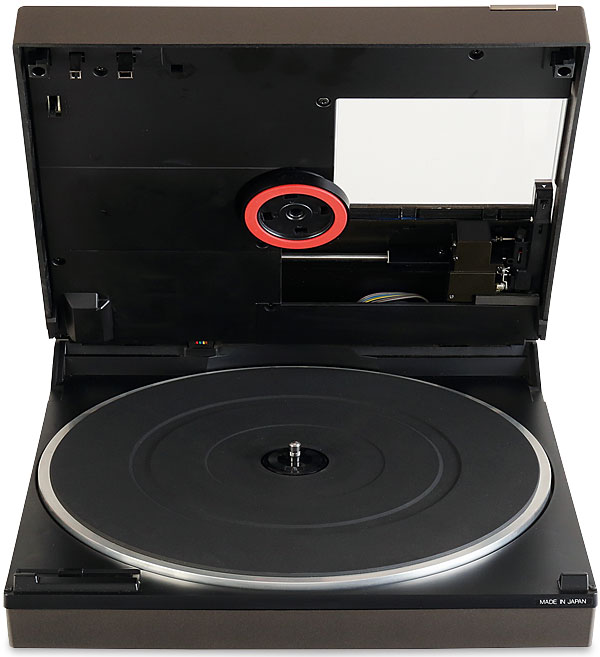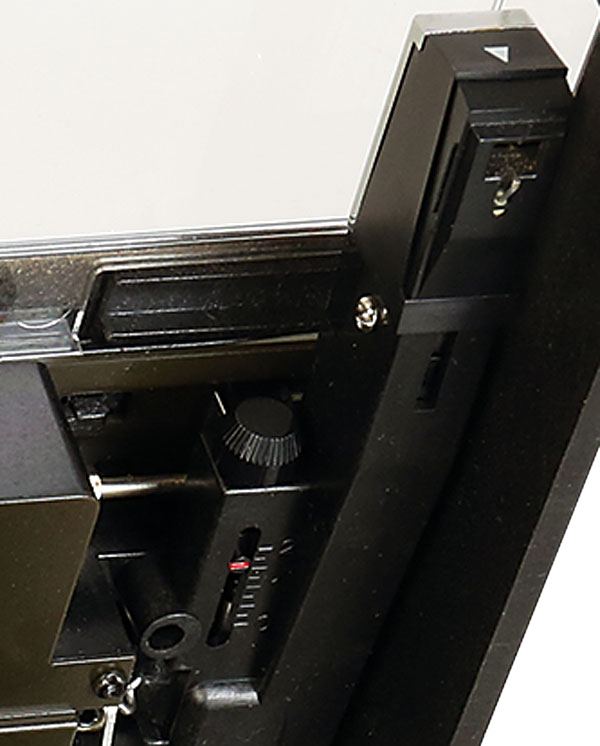Hitachi HT-L70 turntable Page 2
My other fear was that the large surface area of the lid would transfer sound from the room down onto the stylus/record interface, but in practice any effects seemed no worse than those of most lids. There is more to quality engineering than large, heavy components it seems.
![]() Tim Listens
Tim Listens
As mentioned, it is the brightness of the sound that dominates the tonality of the HT-L70. It is certainly not unbearable, but it is ever-present, like the 'sting in the tail' of some exotic moving-coil pick-ups. In part this is due to the characteristics of the MT-70 cartridge, but to upgrade it to something like an Audio-Technica AT-85EP would involve sacrificing all the turntable's track selection functions, so I decided to accept it as part of the package.

Hitachi's claims about tracking performance appear to be borne out in practice, to an extent at least. Secure tracking, consistent across the whole record surface, is a traditional virtue of linear-tracking and one the HT-L70 ably demonstrates. This lends the deck's overall sound an odd sort of smoothness that at least helps offset the bright treble to a good degree.
One disadvantage, shared with the majority of designs that employ very short arms, is a sensitivity to records that are anything other than perfectly flat. Warps of any magnitude introduce very obvious wow, like that of a badly made tape recording. With records that have been properly cared for, though, Hitachi's direct-drive motor gives the sort of consistent and accurate speed regulation CDs have led us to take for granted. Subjectively silent but not as torquey as some, it wasn't ever state-of-the-art, but it does a good job all the same.
All these factors contribute to a sound which I initially found to be engaging and lively. However, being critical I would have to say that the Hitachi HT-L70 is lacking a little when it comes to the sense of scale it can bring out from a musical performance. This manifests itself in two ways, one being what I can only describe as a slightly restricted impression of contrast between loud and soft sounds. The other is a constriction of the soundstage, in terms of width and depth. Both observations are marginal, but they do mean the period rivals from Technics have the edge over the HT-L70.

In Good Order
Listening to the track 'Industrial Disease' from Dire Straits' 1982 album Love Over Gold [Vertigo 6359 109] was a vivid experience, but I did feel that the treble brightness of the HT-L70 was obscuring the track's bass weight to some extent. There was much to commend the presentation though, in particular the good level of vocal clarity and an ability to keep order in what builds into quite a complicated mix.
Debussy's La Mer [Philips 6514 260] showed another side to the HT-H70. Aside from the violins sounding a trifle strained, the only issue that marred my overall enjoyment of this piece was an occasional 'bump-thump' noise emanating from the tracking motor. Again, real insight and clarity were noted, especially during the quieter parts of the recording.
In short, while this deck isn't the SL-10/SL-7 rival Hitachi may have hoped it to be, it works well and has many strengths. As an alternative to a modern 'budget' design that lacks the sophistication of direct drive, quartz lock and linear tracking, it has much to recommend it.

Buying Secondhand
The HT-L70 is not as easy to find today as some of its rivals. Luckily though, the attention paid by Hitachi to the durability of all its products at the time means that those that have survived often need only a small amount of attention to restore them to full health. For those wishing to use the automatic features, the original MT-70 cartridge is a must. Don't bank on finding one separately if the example you buy has it missing. Luckily the situation with styli is a little better as aftermarket copies of the DS-ST70 can still be found.
As the optical sensor ages, periodic re-adjustment of the system's sensitivity is required. It is a reasonably straightforward task for a workshop to perform, and a similar procedure is advised if a replacement MT-70 cartridge is fitted. Thick grease was used in the assembly of these models and this can become sticky over time, gumming up the action of the tracking mechanism in the lid. There is also a small belt that connects the motor to the rest of the gearing and this should be the first suspect if the arm fails to move properly.

Problems with the main motor are rare, but should they occur the two fusible-type resistors protecting the transistors that drive the motor coils should be investigated first. These can change value or fail, causing speed stability problems, a reluctance to start or no rotation at all. Replacements must be of a similar fusible type.
Hi-Fi News Verdict
Hitachi isn't the first name that comes to mind when it comes to turntables, but the technical quality of the direct-drive motor and automatic systems here is of real merit. Yes, the HT-L70 falls short of the Technics SL-7 on sound – the niche it was expected to fill – but Hitachi reliability was second to none during this era. So despite the deck's complexity it shouldn't be problematic to own, even now it's 40-years old.























































